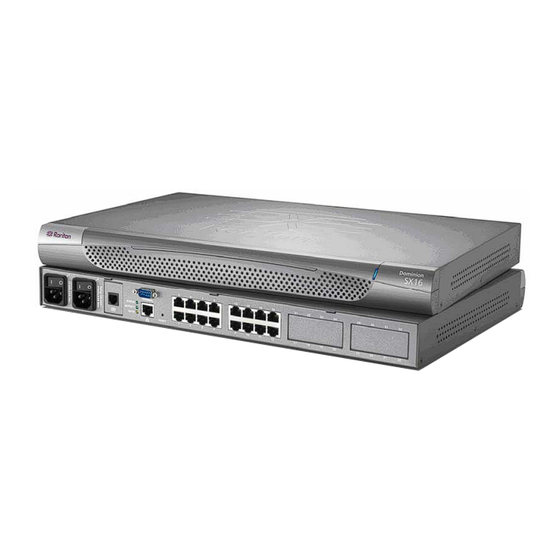
Raritan DOMINION DSX-0N-E Manuals
Manuals and User Guides for Raritan DOMINION DSX-0N-E. We have 1 Raritan DOMINION DSX-0N-E manual available for free PDF download: User Manual
Raritan DOMINION DSX-0N-E User Manual (233 pages)
Serial over IP Console Servers
Brand: Raritan
|
Category: Network Hardware
|
Size: 3 MB
Table of Contents
-
Preface
16-
Audience16
-
Conventions16
-
Acronyms16
-
Notices17
-
-
-
-
LED State24
-
-
Deployment32
-
-
-
-
-
Emulator57
-
Edit63
-
Tools64
-
Stop Logging65
-
Chat66
-
Help67
-
Help Topics67
-
-
-
Certificates79
-
-
Banner85
-
Firewall88
-
-
-
-
-
-
Login114
-
CLI Prompts119
-
CLI Commands119
-
-
Remote Services122
-
RADIUS Command124
-
Configuring Log125
-
Portlog Command127
-
-
Name Command132
-
Ports Command133
-
Route Command133
-
Routeadd Command133
-
Configuring NFS134
-
-
Dpa Command138
-
HTTP Command140
-
HTTPS Command142
-
Logout Command142
-
LPA Command142
-
SSH Command143
-
Telnet Command143
-
-
Configuring SNMP143
-
SMNP Add Command143
-
SNMP Command144
-
-
Configuring Time144
-
-
Addgroup Command146
-
Adduser Command146
-
Edituser Command148
-
Groups Command148
-
Users Command149
-
-
Connect Commands149
-
IPMI Commands149
-
-
Backup Command153
-
Firmware Command155
-
Logoff Command155
-
Password Command155
-
Reboot Command155
-
Restore Command156
-
Upgrade Command157
-
Userlist Command157
-
-
-
Banner Command158
-
Firewall Command160
-
Iptables Command160
-
Kerberos Command162
-
-
-
-
Power Control175
-
-
-
-
Requirements195
-
Connectivity196
-
-
-
Ciscosecure ACS215
-
Active Directory217
-
-
-
Page Access227
-
Firewall228
-
Login229
-
Port Access229
-
Upgrade230
-
Modem231
-
Advertisement
